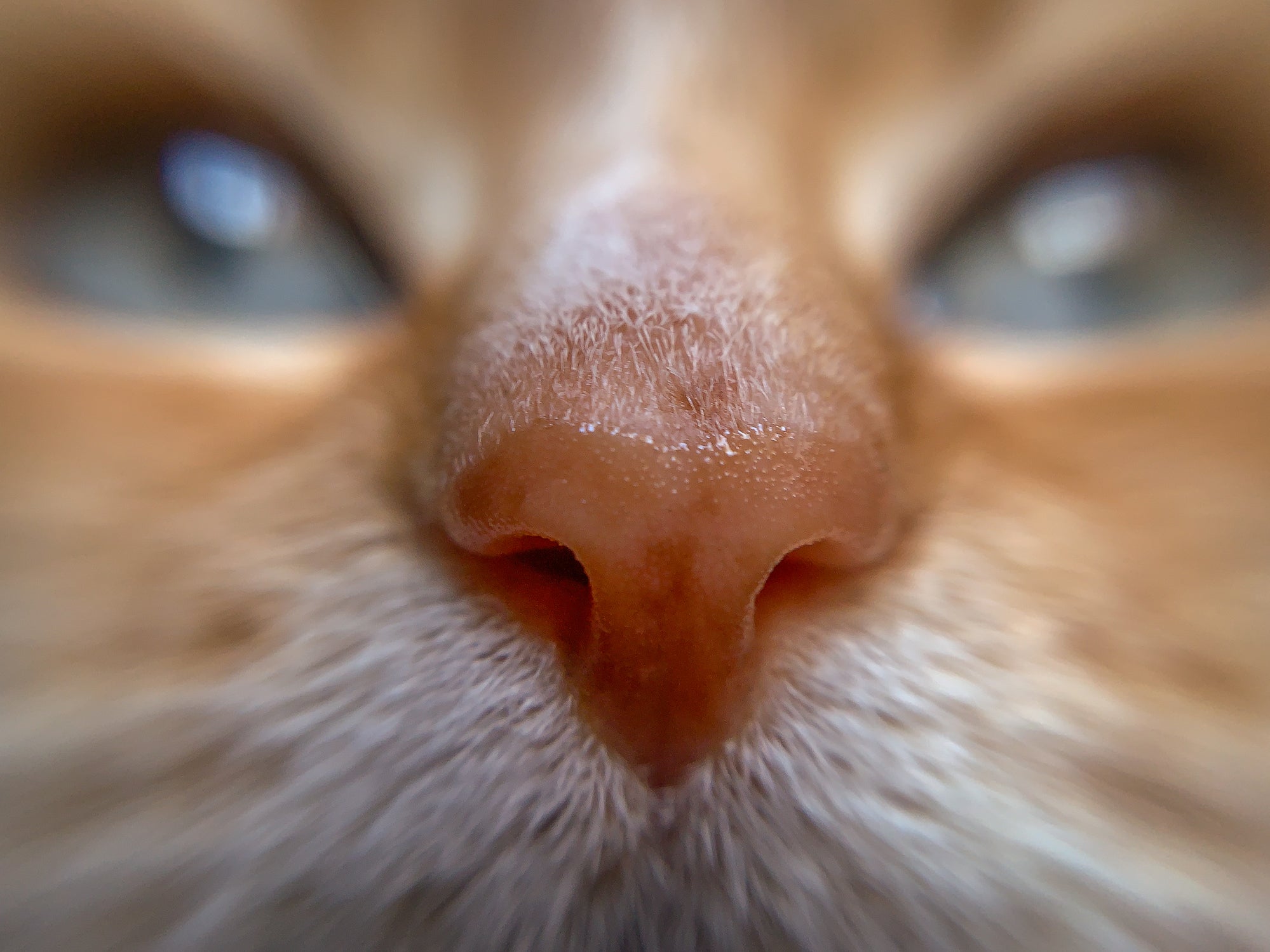How Your Cat Navigates the World (Fascinating Facts About A Cat's Senses)

Ever wonder what it’s like to experience the world through your cat’s eyes, ears, whiskers, and paws? While we rely mostly on sight and sound, cats use a full toolkit of finely tuned senses to hunt, play, explore, and even communicate.
Whether they’re stalking a toy in the dark or suddenly staring at a blank wall (what are they looking at?!), understanding your cat’s sensory world can help you connect with them better—and even troubleshoot behavior issues.
Let’s explore how your feline friend really experiences their environment.
Sight: Can Cats See in the Dark?

Ever wondered: Why do my cat’s eyes glow at night? Cats are night vision pros. While they can't see in total darkness, their eyes are built to see in low-light conditions—perfect for hunting at dawn or dusk. Here’s why:
Cats have more rod cells in their retinas than humans, which are sensitive to dim light.
They also have a tapetum lucidum, a layer behind the retina that reflects light, making their eyes appear to glow at night.
Cats can see in UV - and this affects how they perceive the litter box. Glo™ is formulated with UV sparkles that attract cats to the litter box and is great for cats that have litter box behavioral issues and litter box aversion.
Fun Fact: Cats see best about 6–20 feet away. Anything closer than that? They rely more on whiskers and smell.
Smell: Understanding Smells for Cats

Ever thought about: Why does my cat sniff everything? What does it mean when a cat smells the air?
Your cat’s sense of smell is 40 times stronger than yours. That’s why they’re so sensitive to new scents—or why they’ll sniff the same corner of the room for 10 minutes.
Cats use their nose to recognize people, other animals, and territory.
They even have a special organ (the Jacobson’s organ or vomeronasal organ) on the roof of their mouth, used for detecting pheromones.
When it comes to litter, most cats prefer little to no fragrance. Boxie’s Gently Scented and Scent Free litters offer the perfect balance—designed with your cat’s sensitive nose in mind.
You may see your cat pause, open their mouth slightly, and "taste the air." That’s the Flehmen response—and it’s totally normal.
Hearing: Better Than a Dog’s!
Cats hear ultrasonic frequencies—up to 64,000 Hz (humans cap out at around 20,000 Hz). This allows them to:
Hear the tiniest squeaks of mice or insects
Pick up on the sound of a can opener from across the house
Detect your voice or footsteps long before you enter the room
Their rotating ears can pinpoint sound with incredible accuracy, swiveling 180 degrees to track movement.
🎧 Tip: Loud noises and sudden bangs can be really overwhelming for your cat. Always provide quiet, cozy spaces to retreat to.
Touch: Whiskers, Paws, and Vibration Sensitivity

Why are cat whiskers so long? Can cats feel through their paws? Whiskers aren’t just for decoration—they’re tactile sensors that help your cat "see" in the dark and navigate tight spaces.
Whiskers detect air currents and vibrations
They can even sense the shape and size of nearby objects
Whiskers on the backs of the legs help guide climbing and jumping
Cats also have touch receptors on their paws that help them test surfaces and sense prey movement.
⚠️ Never trim whiskers—they're essential for spatial awareness.
Taste: Not Their Strongest Sense
Here’s something surprising—cats can’t taste sweetness. They lack the taste receptors for it. Instead, their taste buds are tuned to:
Detect amino acids (meat = good)
Identify bitter or sour flavors that could signal spoilage or toxins
This is why many cats turn up their nose at fruit or sweets but go wild for tuna or chicken.
🍗 Pro Tip: If your cat is being picky, texture and smell matter way more than taste.
How Cats Interpret Their World
So how do all these senses work together?
In the wild, cats stalk silently, using smell to identify prey, whiskers to guide movement, and acute hearing to detect any tiny sound.
Indoors, these same instincts help them hunt toys, navigate the dark, and even decide which human they want attention from.
By understanding your cat’s senses, you’ll start to see the world through their lens—and it makes every head tilt, tail twitch, and midair pounce a little less mysterious.
Cats might seem aloof or unpredictable, but their behavior is deeply tied to how they perceive their world. Their super senses make them remarkable hunters, communicators, and companions.
Next time your cat stops to sniff a corner or stares into the shadows, don’t brush it off—they could be sensing something you completely missed.
Want to enrich your cat’s sensory environment? Try rotating toys, using puzzle feeders, adding vertical spaces, providing a cat-friendly cat litter, and experimenting with textures. And don’t forget to scoop the litter box—cats notice everything.
- Tags: Cat Point of View

